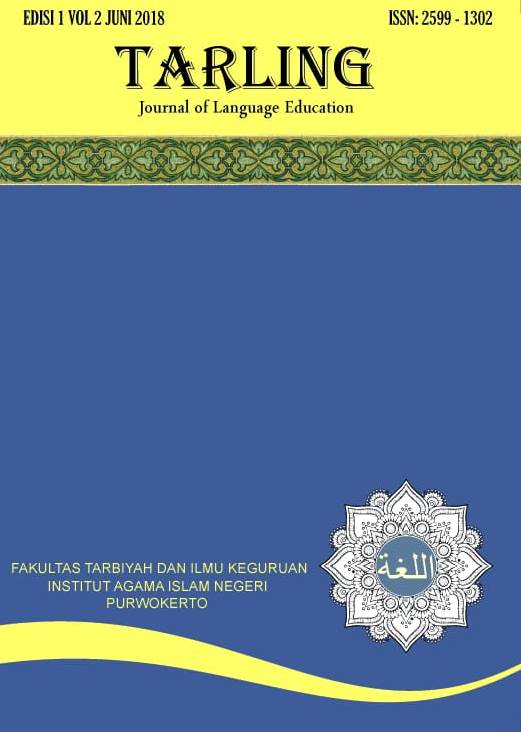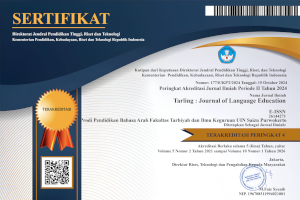Sinonimitas dalam Al-Qur’an: Lafadz Sanah dan ‘Am (Kajian Semantik)
DOI:
https://doi.org/10.24090/tarling.v6i2.6292Keywords:
Synonym, lafadz sanah and 'am, semanticsAbstract
The phenomenon of synonyms in the Qur'an has become a common topic of discussion. In this study, we examine the synonymy of the lafadz sanah and 'am which both mean the year. The data used is a verse of the Qur'an which contains lafadz sanah and 'am. The aim is to find out the meaning of lafadz sanah and 'am in the Qur'an and the relationship between the meanings of lafadz sanah and 'am through semantic analysis. The research methodology used in this research is library research with a qualitative approach. As for the results of the study, it was found that lafadz sanah was used to indicate a bad year/woeful, sad, lousy, sick and tired. While in lafadz 'am it is used to indicate the conditions of a happy, fertile and prosperous year. Then lafadz sanah and 'am are also analyzed based on semantic meaning according to Abdul Chaer who divides the types of meaning into 12, namely lexical meaning, grammatical meaning, contextual meaning, referential and non-referential meaning, denotative meaning, connotative meaning, conceptual meaning, associative meaning, word meaning. , the meaning of terms, the meaning of idioms, and the meaning of proverbs. As for the lafadz sanah and 'am in the Qur'an, several similar meanings are found and there are also some differences based on the semantic meaning according to Abdul Chaer.Downloads
Published
2022-12-31
Issue
Section
Articles
License
Copyright (c) 2022 Dyah Adila Perdana, Ummu Hanifah Syamsuhri

This work is licensed under a Creative Commons Attribution-ShareAlike 4.0 International License.
Authors who publish with this journal agree to the following terms:
- Authors retain copyright and grant the journal right of first publication with the work simultaneously licensed under a Creative Commons Attribution License that allows others to share the work with an acknowledgement of the work's authorship and initial publication in this journal.
- Authors are able to enter into separate, additional contractual arrangements for the non-exclusive distribution of the journal's published version of the work (e.g., post it to an institutional repository or publish it in a book), with an acknowledgement of its initial publication in this journal.
- Authors are permitted and encouraged to post their work online (e.g., in institutional repositories or on their website) prior to and during the submission process, as it can lead to productive exchanges, as well as earlier and greater citation of published work (See The Effect of Open Access).










